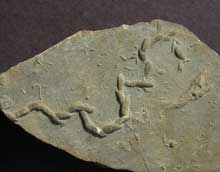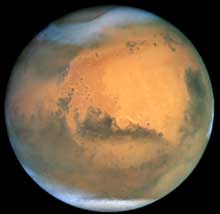Earth Sciences
Earth Sciences (also referred to as Geosciences), which deals with basic issues surrounding our planet, plays a vital role in the area of energy and raw materials supply.
Earth Sciences comprises subjects such as geology, geography, geological informatics, paleontology, mineralogy, petrography, crystallography, geophysics, geodesy, glaciology, cartography, photogrammetry, meteorology and seismology, early-warning systems, earthquake research and polar research.

Suction and pull drive movement of Earth’s plates, U-M researchers show
As anyone with a smattering of geological knowledge knows, Earth’s crust is made up of plates that creep over the planet’s surface at a rate of several inches per year. But why do they move the way they do? Even experts have had trouble teasing out the exact mechanisms.
A model developed by University of Michigan researchers and published in the Oct. 4 issue of Science provides a relatively simple explanation.
“It’s been known that slabs (portions of plates that ext

Unusually small antarctic ozone hole this year attributed to exceptionally strong stratospheric weather systems
Scientists from NASA and the Commerce Department’s National Oceanic and Atmospheric Administration (NOAA) have confirmed the ozone hole over the Antarctic this September is not only much smaller than it was in 2000 and 2001, but has split into two separate “holes.”
The researchers stressed the smaller hole is due to this year’s peculiar stratospheric weather patterns and that a single year’s unusual pattern does not make a long-term trend. Moreover, they said, the data are not conclusive t

University of California, Riverside study dates our ancestors
Study suggests macroscopic bilaterian animals did not appear until 555 million years ago
The traces left behind by ancient animals may hold the key to determining when macroscopic bilaterians — animals that are symmetric about a central axis, with a body divided into equivalent right and left halves, and with an anterior-posterior polarity (e.g., this includes worms, ants, and ranging up to humans) — first appeared. A team led by Dr. Mary Droser, professor of geology at the Univers

Sweating it out: U.S. cities have 10 more hot nights a year than 40 years ago, Cornell climate researchers discover
If you think that summers are getting hotter, you could be right — depending on where you live. Summers are heating up if you live in or near any major U.S. city. But in rural areas, temperatures have remained relatively constant.
“What surprised me was the difference in the extreme temperature trends between rural and urban areas,” says Arthur T. DeGaetano, Cornell associate professor of earth and atmospheric sciences, who reviewed temperature trends from climate-reporting stations across

URI oceanographer studies the effects of inland water on the intensity of landfalling hurricanes
One of the known facts about landfalling hurricanes is their rapid decay, yet some of them retain tropical storm winds and gusts well inland. While studies have shown that the reduction in surface evaporation is a reason for hurricane decay during landfall, little is known about the effect of land surface water on the intensity of hurricanes.
In a recent issue of the Journal of Atmospheric Sciences, URI Graduate School of Oceanography (GSO) physical oceanographer Isaac Ginis, Weixing Shen, f

Climate model for Earth also describes changes on Mars
Orbit affects climate on Mars similar to the way it affects climate on Earth, say three scientists, who used a model of climate change on Earth to explain the layers of deposits in the polar regions of the Red Planet.
Their study appears in the Sept. 26 issue of Nature, and suggests that a climate change theory for Earth can also be applied to Mars and possibly to other Earth-like planets.
“The orbital theory of climate change has been successful in explaining changes in the Earth&